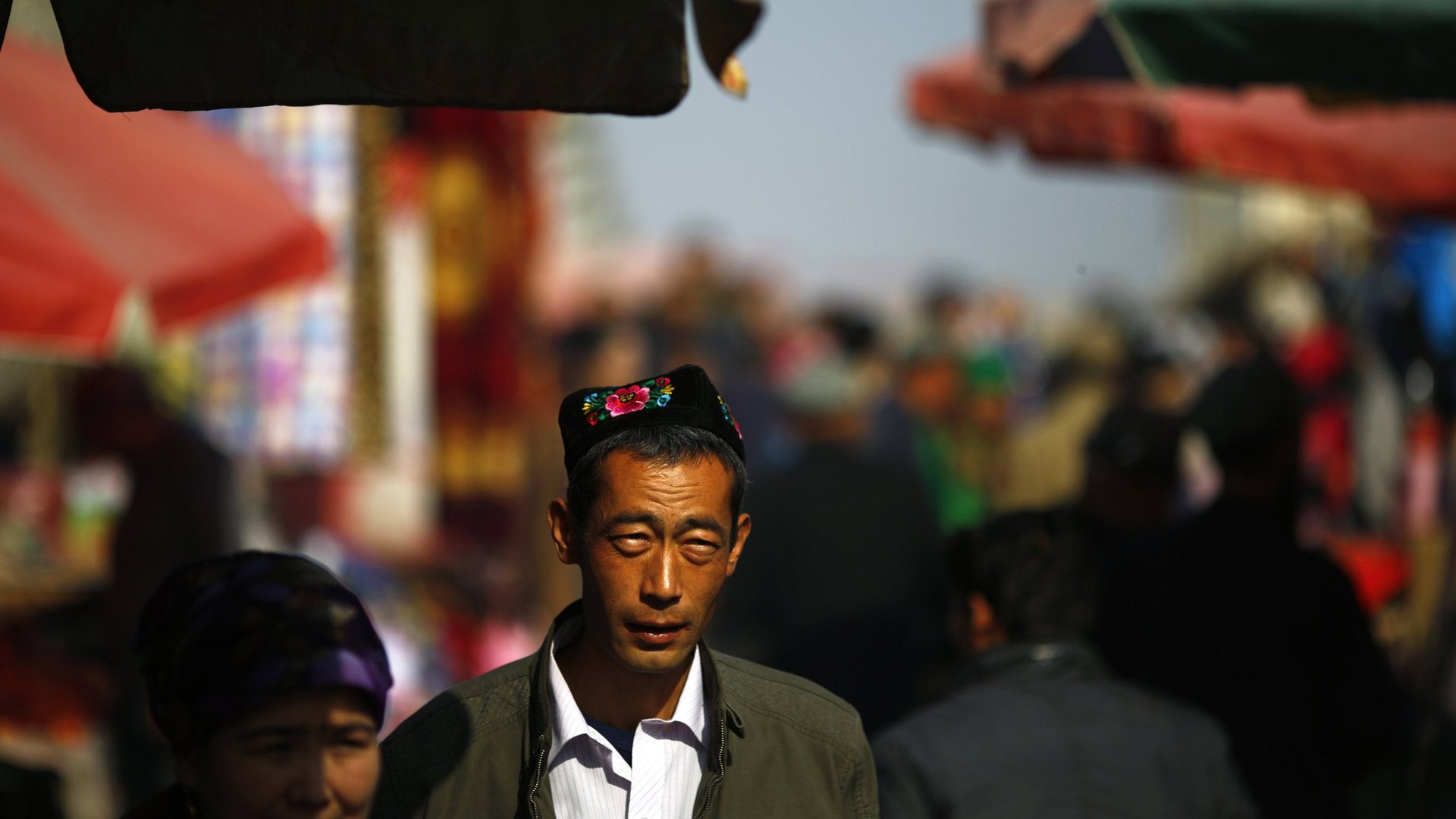Why China’s single time zone is a problem
Imagine that you’ve found yourself in Kashgar, the western-most city in Xinjiang, China’s western-most region. Your friend sends you a text message and tells you to meet him at 3pm. Sounds pretty straight forward, right? Not in Xinjiang. If your friend is of China’s majority Han ethnicity, you can assume that by 3 o’clock he’s referring to Beijing Standard Time. But if your friend is a Uighur, the largest ethnic minority group in Xinjiang, he might be referring to “local time,” which is two hours behind.


Imagine that you’ve found yourself in Kashgar, the western-most city in Xinjiang, China’s western-most region. Your friend sends you a text message and tells you to meet him at 3pm. Sounds pretty straight forward, right? Not in Xinjiang. If your friend is of China’s majority Han ethnicity, you can assume that by 3 o’clock he’s referring to Beijing Standard Time. But if your friend is a Uighur, the largest ethnic minority group in Xinjiang, he might be referring to “local time,” which is two hours behind.
The reason for this confusion is simple: China, a country that is of roughly similar size to the continental United States, has one time zone: Beijing Standard Time. This means that when it’s 6 o’clock in the nation’s capital, it’s 6 o’clock almost 3,000 miles further west, in Kashgar. Allison Schrager, in her widely circulated article from last week advocating that the continental US reduce its time zones from four to two, cited China as an example of why such a change would be less problematic than people would expect. Maybe so, but the single time zone does present odd sights: In the summer, for instance, it isn’t uncommon in Urumqi, Xinjiang’s capital, to see people enjoying a beautiful sunset—at midnight. Or for the sun to rise there in the winter around 10am. In order to accommodate people inconvenienced by the time zone change, shops and restaurants in Xinjiang often adjust their hours—but the effect can still be disorienting for the unaccustomed traveler.
China hasn’t always had one time zone. In 1912, the year after the collapse of the Qing Dynasty, the newly empowered Republic of China established five different time zones in the country, ranging from 5.5 to 8.5 hours past Greenwich Mean Time. But in 1949, as the Communist Party consolidated control of the country, Chairman Mao Zedong decreed that all of China would henceforth be on Beijing time for the purposes of national unity.
Given the state of the nation in those days, Mao’s reasoning was legitimate: Just two decades before, China was a fragmented country, with large swathes (such as Xinjiang) beyond the de facto control of the central government. And this decision to unify the whole country under one time zone was hardly unprecedented: newly-independent India, for example, had instituted a similar policy just two years before.
For most people in China, the single time-zone is at most a mild inconvenience, a scheduling quirk that simply requires a little adjustment. But in Xinjiang, the question of time divides the region’s population. Among Han Chinese, Justin Jacobs, a Xinjiang expert at American University, told me, use of Beijing Standard Time is universal: “that there’s another clock is not even something the Han think about.” But much of the Uighur population prefers to use their own time. In Urumqi, a city in Xinjiang’s east populated mostly by the Han, Beijing Standard Time suffices. But as you head further west, into areas further away from Beijing (and with a higher concentration of Uighurs), knowing “which time” to use becomes trickier. In Xinjiang’s extreme West, near China’s border with Pakistan, Beijing Standard Time is so irrelevant that it isn’t even used on bus timetables.
Why does this discrepancy exist? For the Uighur population, using their own time is more than just restoring the clock to a more natural equilibrium: it’s also about politics. As hope for greater autonomy within China has faded—due to a combination of government suppression and Han migration—Uighurs consider their time as, in the words of the writer Ruth Ingram, a psychological tool for independence.
Over the last six decades, Uighurs have chafed under Beijing policies that have restricted their ability to study in their language and practice their Islamic faith and rendered it difficult for them to cope in a Han-dominated Chinese society. Within Xinjiang, Uighurs and Han populations are largely segregated, breeding resentment that occasionally boils over into violence. Most recently, Chinese authorities arrested three Uighurs in connection to a jeep collision in Tiananmen Square last week that killed two and injured 40. Beijing has blamed the East Turkestan Islamic Group, a UN-designated terrorist organization that supports Uighur independence, though others have doubted its ability to pull off such an attack. In any event, the Tiananmen episode seems assured to worsen an already tense situation in Xinjiang.
On the list of causal explanations for Han-Uighur tension, the use of Beijing Standard Time in Xinjiang would rank low. But the time zone issue does represent, in a way, the limits of the Communist Party’s approach to its western-most province. Since gaining control of China in 1949, the Party has attempted to smooth out the country’s vast regional differences by using policies to affirm, occasionally by force, national unity. But in treating a vast, complex region like Xinjiang as just another Chinese province, Beijing has prevented the population from forging a trans-ethnic identity, one based around Xinjiang’s unique geography and distance from Beijing. Whatever China decides to do with its time zone may ultimately matter little to the country’s political or economic situations—but re-thinking the logic behind instituting the time zone in the first place could instead pay dividends.
Matt Schiavenza is an associate editor at The Atlantic, where he oversees The China Channel.